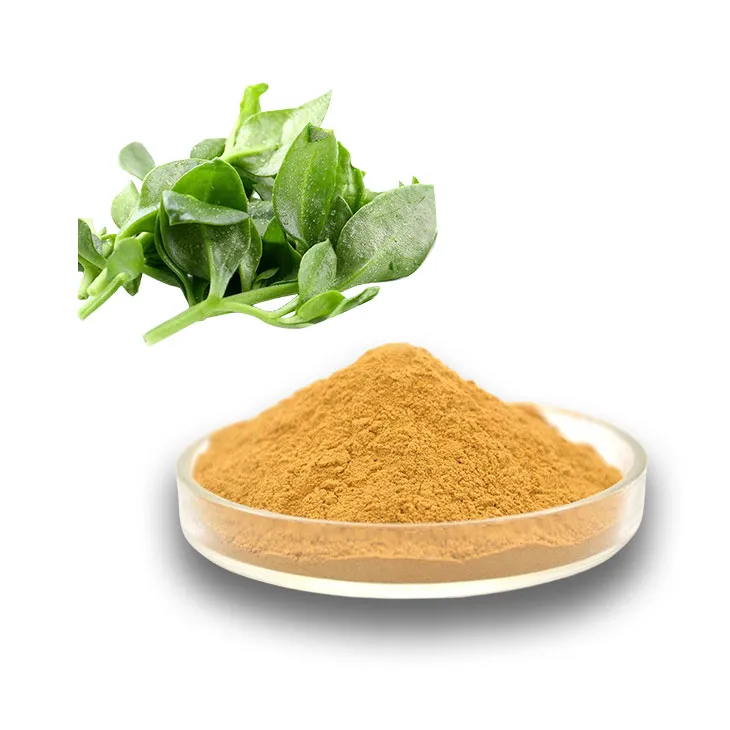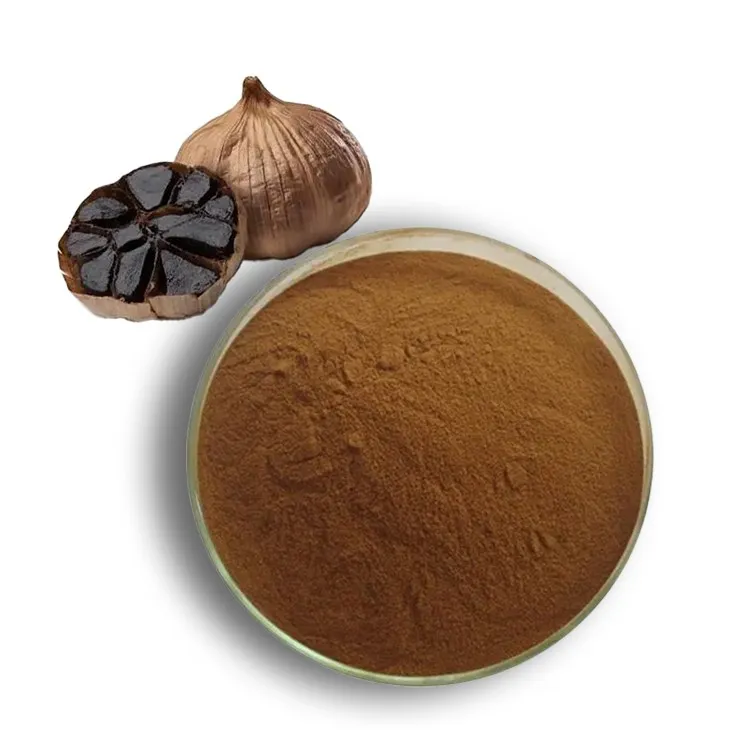- 0086-571-85302990
- sales@greenskybio.com
Hesperidin: Its Impact on Health and How it Benefits Your Body
2025-08-24

As the landscape of nutrition science expands, bioactive compounds such as Hesperidin are gaining attention for their potential health benefits. Found abundantly in citrus fruits, particularly in the peels and pulps, Hesperidin is a flavonoid with a range of beneficial effects on human health. Despite being a lesser-known nutrient, its properties as an antioxidant and its role in cardiovascular health make it a significant area of interest for both research and practical health applications. This article delves into what Hesperidin does to your body, the scientific evidence supporting its benefits, and how to incorporate it into your diet effectively.
What is Hesperidin?
Hesperidin is a type of bioflavonoid, a naturally occurring plant compound found primarily in citrus fruits such as oranges, lemons, limes, and grapefruits. It was first isolated from citrus peels in the 19th century and has since been recognized for its potential medicinal properties. As part of the flavonoid family, hesperidin is noted for its potent antioxidant capabilities, which help to neutralize harmful free radicals in the body.

Health Benefits of Hesperidin
1. Antioxidant Properties
One of the most significant roles of hesperidin is its function as an antioxidant. Antioxidants are crucial in protecting the body against oxidative stress, which occurs when there is an imbalance between free radicals and antioxidants in the body. This imbalance can lead to cellular damage, contributing to the aging process and the development of various chronic diseases. Hesperidin aids in reducing oxidative stress by neutralizing free radicals, thus safeguarding cellular integrity and supporting overall health.
2. Cardiovascular Health
Hesperidin has been extensively studied for its beneficial effects on cardiovascular health. It is known to promote healthy blood circulation and improve the function of blood vessels. By enhancing endothelial function—the inner lining of blood vessels—hesperidin helps in maintaining arterial flexibility, which is essential for proper blood flow. Additionally, it aids in lowering blood pressure and reducing inflammation within the arteries, thereby decreasing the risk of cardiovascular diseases such as heart attacks and strokes.
3. Anti-inflammatory Effects
Chronic inflammation is a contributing factor to numerous health conditions, including arthritis, diabetes, and heart disease. Hesperidin exhibits strong anti-inflammatory properties, which help in reducing inflammation at a cellular level. It inhibits the production of inflammatory cytokines and enzymes, which are compounds that contribute to the inflammatory response. This makes hesperidin a potential therapeutic agent for managing inflammatory and autoimmune disorders.
4. Immune System Support
The immune-boosting capabilities of hesperidin are anchored in its antioxidant properties. By enhancing the body’s ability to counteract oxidative stress, hesperidin supports the immune system’s function, helping in the prevention of infections and the maintenance of overall health. This makes it a valuable component of a diet focused on bolstering immune defenses, particularly during cold and flu seasons.
5. Blood Sugar Regulation
Hesperidin may also play a role in regulating blood sugar levels, making it valuable for individuals with, or at risk of, diabetes. It enhances glucose metabolism and insulin sensitivity, thereby helping to maintain stable blood sugar levels. Some studies suggest that hesperidin can effectively lower fasting blood glucose levels and improve lipid profiles, contributing to better management of type 2 diabetes and metabolic syndrome.
6. Bone Health
Emerging research points towards the positive effects of hesperidin on bone health. It is believed to enhance bone density and strength by promoting the formation of new bone cells and inhibiting bone resorption, the process by which bone is broken down. These properties suggest that hesperidin could play a role in preventing osteoporosis and other bone-related conditions, especially in postmenopausal women who are at increased risk.
7. Potential Anti-Cancer Properties
Preliminary studies indicate that hesperidin may have potential anti-cancer effects. It has been observed to inhibit the growth and proliferation of certain cancer cells in laboratory studies. The antioxidant and anti-inflammatory properties of hesperidin may contribute to these effects, although more research is necessary to fully understand its potential role in cancer prevention and treatment.

Incorporating Hesperidin into Your Diet
To harness the benefits of hesperidin, it is essential to include citrus fruits and their derivatives in your dietary routine. Here are several practical tips on how to maximize your intake of this beneficial compound:
1. Consume Whole Citrus Fruits
Eating whole citrus fruits such as oranges, tangerines, grapefruits, and lemons is the most direct way of incorporating hesperidin into your diet. The peels and membranes contain the highest concentrations, so consuming them as part of the whole fruit or zesting them into dishes can be beneficial.
2. Opt for Fresh Juices
Freshly squeezed citrus juices are another excellent source of hesperidin. However, ensure that you consume juices where pulp is included, as it preserves the bioflavonoids.
3. Use Citrus Zest in Cooking
Adding citrus zest to your cooking not only enhances flavor but also boosts your hesperidin intake. Zest can be added to soups, salads, marinades, desserts, and beverages.
4. Explore Citrus-Based Supplements
For those who find it challenging to consume enough citrus in their diets, hesperidin supplements are available. These should be taken as directed and ideally under the guidance of a healthcare professional to ensure appropriate dosage and prevent potential interactions with medications.
5. Balance with a Diverse Diet
Including a variety of fruits and vegetables alongside citrus will not only provide hesperidin but also an array of other vital nutrients and antioxidants, enriching your diet comprehensively.

Conclusion
Hesperidin, a potent bioflavonoid found primarily in citrus fruits, offers multiple health benefits, from supporting cardiovascular health and enhancing immune function to reducing inflammation and potentially playing a role in cancer prevention. By incorporating citrus fruits and their derivatives into the diet, individuals can harness these benefits as part of a balanced, health-conscious lifestyle. As scientific research continues to unveil the extensive benefits of hesperidin, it remains a compelling addition to nutritional strategies aimed at promoting long-term health and vitality. While further research is necessary to elucidate all the mechanisms and applications, the current evidence makes a strong case for integrating hesperidin-rich foods into everyday dietary practices.
- ▶ Hesperidin
- ▶ citrus bioflavonoids
- ▶ plant extract
- ▶ lycopene
- ▶ Diosmin
- ▶ Grape seed extract
- ▶ Sea buckthorn Juice Powder
- ▶ Beetroot powder
- ▶ Hops Extract
- ▶ Artichoke Extract
- ▶ Reishi mushroom extract
- ▶ Astaxanthin
- ▶ Green Tea Extract
- ▶ Curcumin Extract
- ▶ Horse Chestnut Extract
- ▶ Other Problems
- ▶ Boswellia Serrata Extract
- ▶ Resveratrol Extract
- ▶ Marigold Extract
- ▶ Grape Leaf Extract
- ▶ blog3
- ▶ Aminolevulinic acid
- ▶ Cranberry Extract
- ▶ Red Yeast Rice
- ▶ Red Wine Extract
-
Acerola Extract
2025-08-24
-
Hops Extract
2025-08-24
-
Red Wine Extract
2025-08-24
-
Nutmeg Extract
2025-08-24
-
Andrographis Paniculata Extract Powder
2025-08-24
-
Black Garlic Extract
2025-08-24
-
Eucommia Ulmoides Extract
2025-08-24
-
Propolis Extract Powder
2025-08-24
-
Quercetin
2025-08-24
-
Marigold Extract
2025-08-24





















